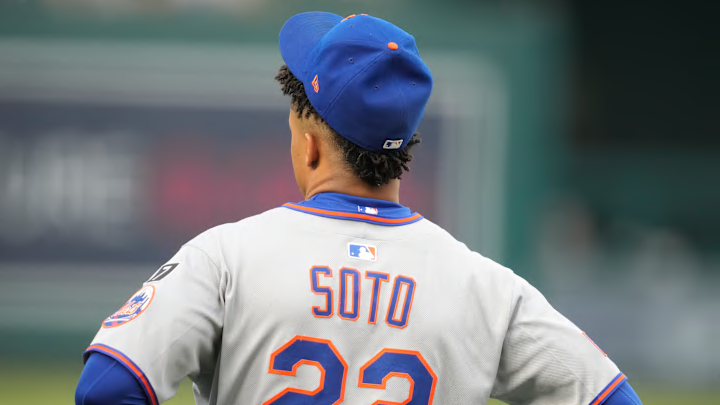After a historic $765 million investment in generational talent Juan Soto, his start with the New York Mets hasn't been as spectacular as expected. Compared to March and April during his career, 2025 is his second-worst start in terms of home runs hit, his second-lowest OPS, and his worst Isolated Power (ISO) since his debut.
Despite this slow start, Steve Cohen isn't worried about Soto's on-field performance after the huge financial commitment to the young player. In an interview with the NY Post, Cohen argued that Soto has been contributing by working the counts and drawing walks to put the team in a better position. He also said, "It's very subtle how that works, and you just can't just look at it in a very narrow sense. And saying that, listen, I'm not worried about Juan."
While Juan Soto hasn't been a complete non-starter, there are factors in his hitting approach that could be a bit concerning
Digging deeper into Juan Soto's early-season metrics reveals some potential cracks beneath the surface-level reassurance. While his overall offensive output, measured by a wRC+ that sits comfortably 25% above the league average, suggests he's still a productive hitter, a closer look at his batted ball profile and bat speed data paints a slightly different picture.
He's still making hard contact at a rate consistent with his career norms (around 50%), and his exit velocity remains a robust 93+ mph. His plate discipline also remains top-tier, evidenced by a strikeout rate of around 15% and a walk rate near 16%, placing him among the league's elite in both categories.
Yet, a significant driver of his underwhelming power output appears to be an elevated ground ball rate, hovering around 60% of his batted balls. This tendency to hit the ball into the dirt severely limits his ability to generate extra-base hits and has contributed to a career-low xwOBA, according to Baseball Savant. While batted ball distributions can fluctuate as a hitter's timing and ability to square up pitches evolve – areas where Soto has historically excelled – this current trend warrants attention.
More concerning is the data emerging from Statcast's bat tracking. Soto's average bat speed has dipped to an all-time low, with his rate of fast swings falling considerably below 40%. This is noteworthy because Soto's prodigious power is typically fueled by a potent combination of high bat speed and the ability to square up the ball, resulting in what Statcast terms "blasts." In 2024, blasts yielded a staggering 1.182 SLG and a +34 run value per 100 pitches, underscoring the importance of bat speed for Soto's offensive ceiling.
To be sure, Soto's advanced hitting acumen provides optimism that he can make timely adjustments to reverse these trends, particularly if he can elevate the ball more consistently to capitalize on his hard-hit ability. However, the confluence of a high ground ball rate and declining bat speed presents a scenario where relying solely on his historical track record for a power surge might be precarious. For Steve Cohen's substantial investment to yield the expected returns, a keen eye must remain on these underlying metrics to ensure Soto rediscovers the explosive swing that has defined his career.
